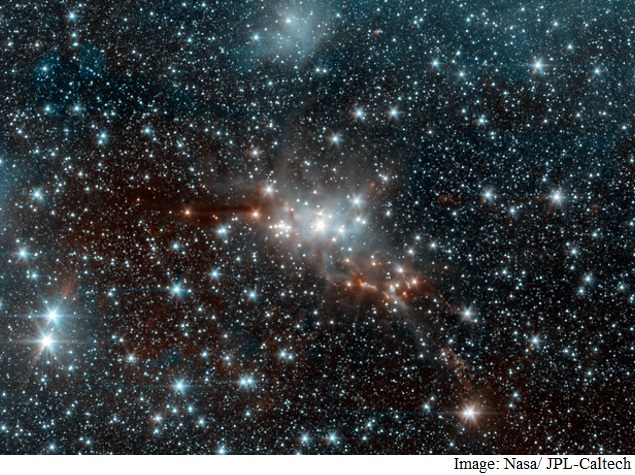- Home
- Science
- Science News
- Nasa Looks to Machine Learning to Faster Identify Stars
Nasa Looks to Machine Learning to Faster Identify Stars

The research is part of the growing field of machine learning, in which computers learn from large data sets, finding patterns that humans might not otherwise see.
"With 'machine learning', computer algorithms can quickly flip through available stacks of images, identifying patterns that reveal a star's properties," the US space agency said in a statement.
The technique, that essentially works in the same way as e-mail spam filters, has the potential to gather information on billions of stars in a relatively short time and with less expense.
"It is like video-streaming services not only predicting what you would like to watch in the future, but also your current age, based on your viewing preferences," said lead author Adam Miller of Nasa's Jet Propulsion Laboratory in Pasadena, California.
But before the machines can learn, they first need a "training period."
Miller and his colleagues started with 9,000 stars as their training set.
They obtained spectra for these stars which revealed several of their basic properties: sizes, temperatures and the amount of heavy elements, such as iron.
The varying brightness of the stars had also been recorded by the Sloan Digital Sky Survey, producing plots called light curves.
By feeding the computer both sets of data, it could then make associations between the star properties and the light curves.
Once the training phase was over, the computer was able to make predictions on its own about other stars by only analysing light-curves.
"We can discover and classify new types of stars without the need for spectra, which are expensive and time-consuming to obtain," Miller added.
The team's next goal is to get their computers smart enough to handle the more than 50 million variable stars.
The report was published in the Astrophysical Journal.
Get your daily dose of tech news, reviews, and insights, in under 80 characters on Gadgets 360 Turbo. Connect with fellow tech lovers on our Forum. Follow us on X, Facebook, WhatsApp, Threads and Google News for instant updates. Catch all the action on our YouTube channel.
Related Stories
- Samsung Galaxy Unpacked 2025
- ChatGPT
- Redmi Note 14 Pro+
- iPhone 16
- Apple Vision Pro
- Oneplus 12
- OnePlus Nord CE 3 Lite 5G
- iPhone 13
- Xiaomi 14 Pro
- Oppo Find N3
- Tecno Spark Go (2023)
- Realme V30
- Best Phones Under 25000
- Samsung Galaxy S24 Series
- Cryptocurrency
- iQoo 12
- Samsung Galaxy S24 Ultra
- Giottus
- Samsung Galaxy Z Flip 5
- Apple 'Scary Fast'
- Housefull 5
- GoPro Hero 12 Black Review
- Invincible Season 2
- JioGlass
- HD Ready TV
- Laptop Under 50000
- Smartwatch Under 10000
- Latest Mobile Phones
- Compare Phones
- Redmi Note 15 5G
- Redmi Note 15 Pro 5G
- Redmi Note 15 Pro+ 5G
- Lava Play Max
- Poco C85 5G
- Honor Magic 8 Lite
- Jolla Phone
- Realme P4x 5G
- Asus ProArt P16
- MacBook Pro 14-inch (M5, 2025)
- OnePlus Pad Go 2
- Poco Pad M1
- Just Corseca Skywatch Pro
- Honor Watch X5
- Acerpure Nitro Z Series 100-inch QLED TV
- Samsung 43 Inch LED Ultra HD (4K) Smart TV (UA43UE81AFULXL)
- Asus ROG Ally
- Nintendo Switch Lite
- Haier 1.6 Ton 5 Star Inverter Split AC (HSU19G-MZAID5BN-INV)
- Haier 1.6 Ton 5 Star Inverter Split AC (HSU19G-MZAIM5BN-INV)

















